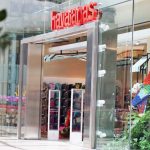Skechers USA, Inc. reported sales in the third quarter jumped 20.5 percent, led by robust gains in the EMEA and Americas regions. However, earnings came in below plan and its full-year outlook was reduced as a sudden improvement in transit times and port throughput caused $50 million of incremental logistics costs.
The profit shortfall and reduced guidance also reflect continued COVID-related challenges in China as well as foreign currency headwinds.
“We are optimistic that the COVID-related restrictions are easing with only a few markets around the world still facing temporary closures and restrictions, and that freight costs are beginning to decline,” said David Weinberg, COO, on a call with analysts. “However, macroeconomic headwinds, including foreign currency exchange rates, and congestion within our distribution centers due to the strong demand for our product, and supply chain disruptions over the past year impacted our reported results in the third quarter, and we expect will remain a factor into the new year.”
Elaborating on the supply chain challenges, John Vandemore, CFO, noted that Skechers about a year ago began experiencing container shortages, factory closures and severe port congestion. Driving elongated order timelines, Skechers significantly increased its backlog volume to reduce product availability risks as the brand continues to see strong demand in the marketplace.
“About midyear, we experienced significant improvement in transit times and port throughput,” added Vandemore. “This resulted in capacity challenges in distribution networks across the industry due to a meaningfully increased arrival rate for goods. Consequently, we experienced and continue to experience processing constraints at our distribution centers, leading to cost inefficiencies as we work to mitigate the impact of these disruptions on our customers.”
Overall, Skechers absorbed approximately $50 million of incremental logistics costs globally in the quarter impacted earnings results. In addition, more significant than expected COVID-related challenges in the Asia Pacific region, particularly in China, and adverse foreign currency fluctuations weighed on expected results.
Said Vandemore, “While we are disappointed with the lack of earnings flow-through from our better-than-expected sales in the quarter, we are confident that supporting our customers was the right decision for our brand. Further, we believe the corrective actions we have taken and are taking to accelerate additional capacity and adjust future orders will ultimately resolve the situation and restore efficiencies.”
In the quarter ended September 30, earnings fell 16.7 percent to $85.9 million, or 55 cents a share. Skechers’ guidance had been in the range of 70 cents to 75 cents. Excluding changes in foreign exchange rates, primarily in EMEA, EPS would have been 64 cents.
In early-afternoon trading Wednesday, shares of Skechers were down about 4 percent.
Sales in the quarter reached $1.88 billion, a year-over-year increase of 20.5 percent on a reported basis and 27 percent on a constant currency basis. The gains were led by double-digit growth in both its wholesale and direct-to-consumer (DTC) segments as well as overall double-digit growth in nearly every country.
Wholesale Sales Expand 26 Percent
Wholesale sales increased 26 percent year-over-year to $1.19 billion, led by 33 percent growth internationally and 15 percent growth domestically. Wholesale growth was driven by increases in EMEA of 58.8 percent and AMER of 18.1 percent. APAC wholesale sales grew 8 percent. Wholesale volume increased 25.1 percent and the average selling price inched up 1.4 percent.
Weinberg said Americas’ wholesale sales growth was due primarily to a 15 percent increase within its U.S. wholesale business with improvements across genders and multiple categories, most notably in sport, casual and work lines as well as the unit price. Canada and Mexico, its two largest American markets outside the U.S., also achieved double-digit wholesale growth. Every Latin American country also saw sales improvements, except Chile, which is experiencing significant economic volatility.
Growth in EMEA wholesale was primarily driven by double-digit improvements across all European countries, as well as growth within distributors, primarily driven by the Middle East, Turkey and Scandinavia, partially offset by the continued cessation of shipments to Russia.
APAC wholesale sales increased primarily due to strength within distributors, as well as India and Singapore, and the addition of the Philippines, which transitioned from a distributor in 2021. The increases were partially offset by decreases in China and Japan due to COVID-related lockdown measures.
DTC Sales Climb 11.9 Percent
DTC sales increased 11.9 percent year over year to $686.8 million, led by increases in the Americas region of 13.8 percent and APAC of 10.0 percent. EMEA DTC revenues gained 6 percent. Domestic DTC sales increased 15 percent, primarily due to strong double-digit online growth. International DTC sales grew in nearly every country, partially offset by declines in China, which was impacted by the temporary closures of just over 10 percent of its company-owned stores and Chile due to economic volatility. DTC volume increased 11.1 percent and the average selling price increased 0.6 percent.
By region across wholesale and DTC, sales in the Americas climbed 16 percent year over year to $948 million, supported by growth across all channels. Vandemore said, “As we work to alleviate the congestion in our domestic distribution network, we expect sustained consumer demand for our products and brand resonance will continue to drive growth across the region in the fourth quarter.”
In EMEA, sales increased 48 percent year over year to $469.8 million, primarily driven by strength at wholesale, which benefited from improvements in product availability compared to last year’s European port congestion.
In APAC, sales advanced 9 percent year over year to $460.6 million and 17 percent on a currency-neutral basis, driven by strength in distributor markets, as well as India, Singapore and Malaysia, partially offset by a decline in China. Excluding China, APAC sales grew 60 percent. In China, sales declined 19 percent and 13 percent in constant currencies due to the temporary store closures. Vandemore said, “We expect ongoing COVID-related lockdowns and restrictions to continue to impact our operations into 2023. This, however, does not diminish our view of the Chinese market long term, where the Skechers brand is uniquely positioned with our distinctive products and attractive value proposition.”
Gross Margins Give Back
Gross margins in the quarter eroded 280 basis points to 47.1 percent, primarily the result of increased freight and logistics costs, and a higher proportion of distributor sales, partially offset by average selling price increases.
Operating expenses rose 19.5 percent, but were reduced as a percent of sales by 30 basis points to 19.5 percent. Selling expenses increased 18.0 percent due to higher global digital and marketing expenditures. General and administrative expenses grew 19.9 percent, primarily driven by higher labor and warehouse expenses tied to supply chain congestion.
Operating earnings fell 11.1 percent to $130.0 million.
Inventory ended the quarter up 45 percent year over year and ahead 21.0 percent since the start of the year. The higher inventory levels primarily reflect growth in the U.S. Said Vandemore, “We are optimistic that inventories will gradually return to normalized levels as supply chain volatility diminishes.”
Looking to the fourth quarter, Skechers now expects sales in the range of $1.725 billion to $1.775 billion and EPS in the range of 30 cents to 40 cents. Wall Street’s consensus estimates for the fourth quarter had called for sales of $1.81 billion and EPS of 52 cents. In the 2021 fourth quarter, sales were $1.65 billion with EPS on adjusted basis reaching 43 cents.
Gross margins are expected to see sequential improvements in the quarter. The guidance also reflects the continuing impact of inefficiency in our distribution network associated with supply chain congestion, as well as ongoing COVID-related operating limitations,m particularly in the Asia Pacific region.
Demand For Comfort Footwear
Weinberg said demand for Skechers remains resilient in the marketplace. From a product standpoint, good responses were seen to the extension of its Skechers Arch Fit technology into a wider offering of styles, the introduction of Hands-Free Slip-Ins, and the expansion of Skechers Street fashion offerings and collaborations. In the performance side, the Viper Court Pickleball collection saw strong demand while the MaxRoad 5 running model received awards from both Men’s Health and Self magazines. This month, an update to the Razor 4, worn by Meb Kefelzighi in his Boston Marathon win, arrived with new Hyper Burst Pro cushioning technology.
Skechers also continues to drive awareness through its commercials featuring a wide range of ambassadors from Martha Stewart, Sugar Ray Leonard and Tony Romo as well as elite golfers, Brooke Henderson and Matt Fitzpatrick.
Weinberg also said Skechers continues to invest in building capacity at distribution centers to support demand while facing some challenges securing parts to accelerate build-outs in the U.S. and Panama.
Weinberg also said Skechers’ healthy demand continues to benefit from its strong positioning around comfortable footwear. He said, “As consumers have truly come to view casual as the new normal, we are in a unique position with our extensive offering.”
Photo courtesy Skechers x Marvel
















